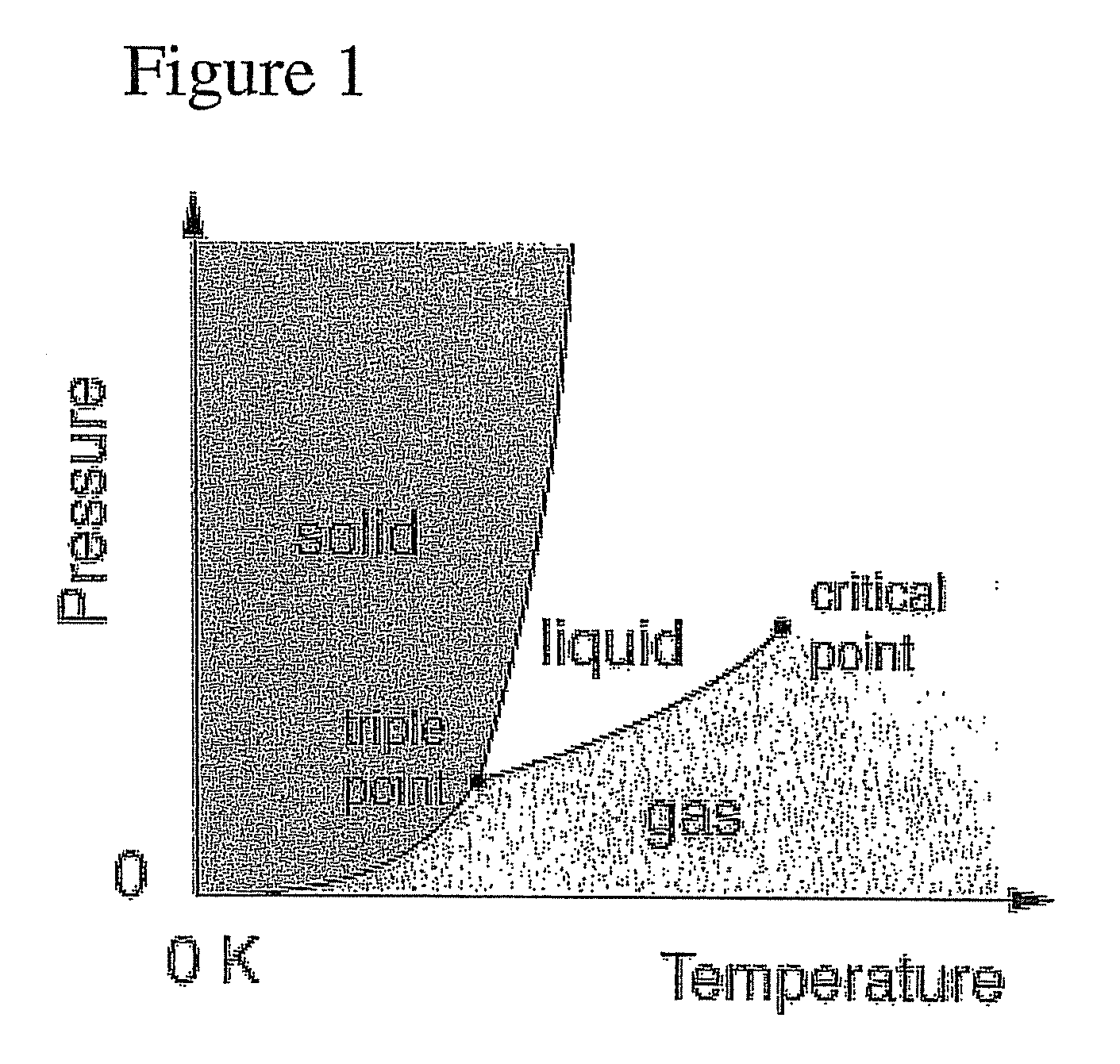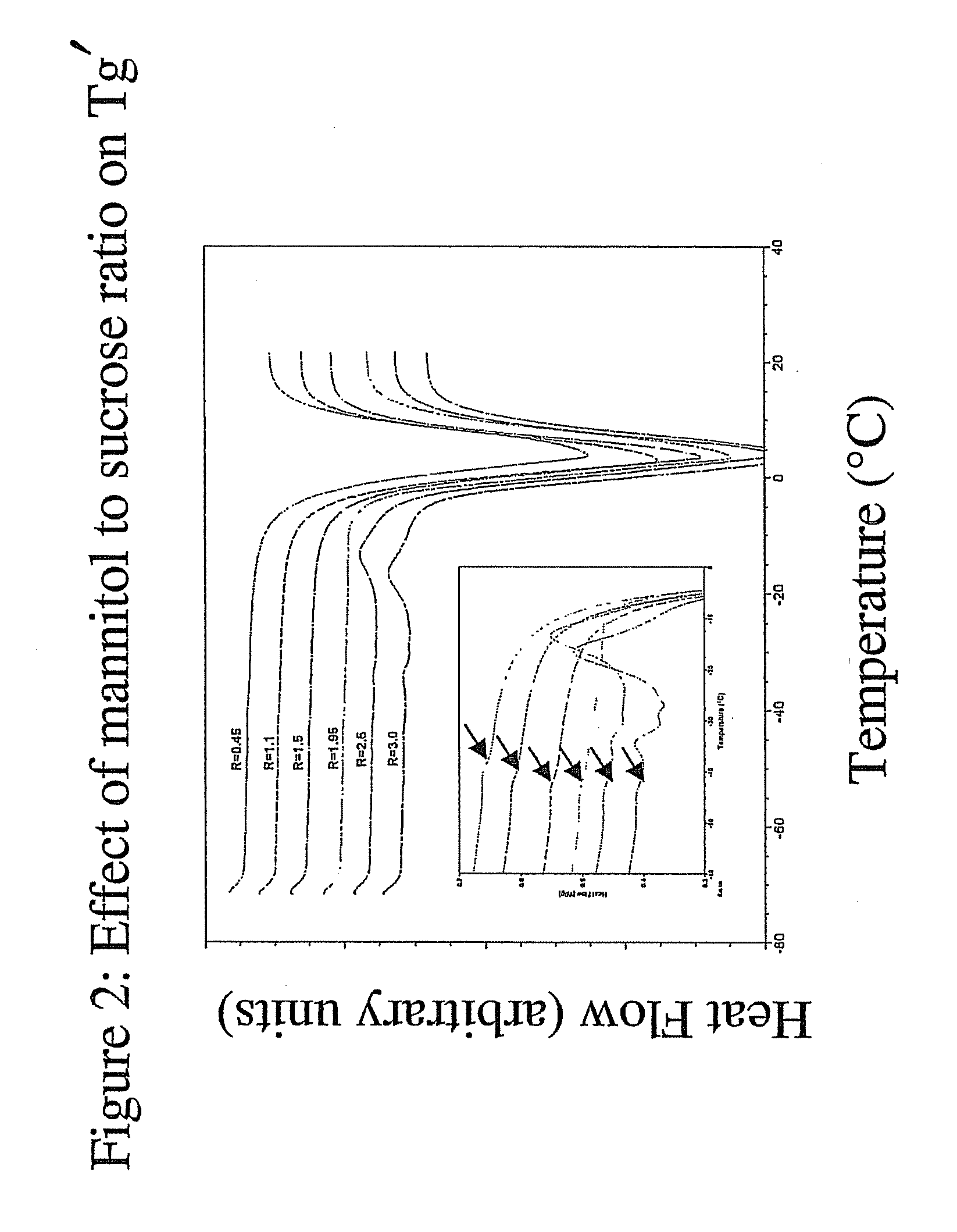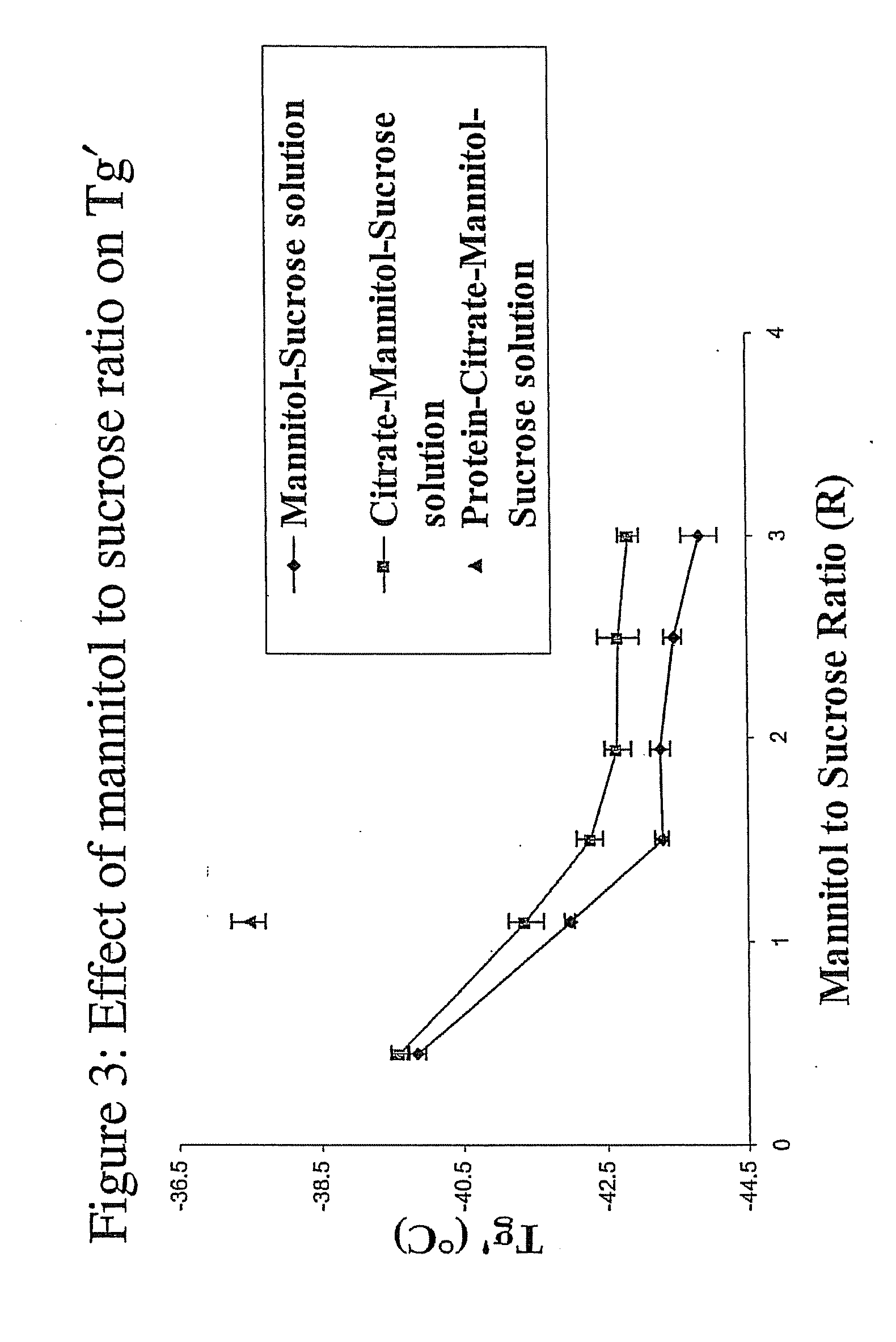Pharmaceutical Formulation and Process
a technology of liquid formulation and pharmaceuticals, applied in the direction of drug compositions, antibody medical ingredients, peptide/protein ingredients, etc., can solve the problems of affecting product stability, reducing stability, and affecting product stability, so as to achieve less dramatic effect on tg′ and increase tg′
- Summary
- Abstract
- Description
- Claims
- Application Information
AI Technical Summary
Benefits of technology
Problems solved by technology
Method used
Image
Examples
working examples
Example 1
[0130] Differential scanning calorimetry (DSC) and X-ray powder diffractometry (XRD) were used to characterize the crystallization of mannitol is various formulations. In the DSC, the solutions were cooled from room temperature to −70° C. at 20° C. / minute, held for 40 minutes, and heated to RT at 5° C. / minute. The annealing temperature ranged from −49° C. to −37° C., while the annealing time ranged from 15 to 480 minutes. The diffraction patterns were obtained in a wide angle X-ray powder diffractometer (CuKα radiation; 45 kV×40 mA). The sample was subjected to a controlled temperature program ranging from −70° C. to 25° C. and exposed to CuKα radiation in the continuous mode at chopper increments of 0.05° 2θ. The angular range was 5 to 40° 2θ, the step size was 0.05° 2θ and the dwell time was 1 sec.
example 1a
The Effect of Mannitol to Sucrose Ratio on Tg′
[0131]FIG. 2 shows the effect of the mannitol to sucrose ratio (R) on Tg′ (no protein). As shown in the figure, the Tg′ of a formulation containing mannitol and sucrose is dependant on the mannitol to sucrose ratio (R). As the ratio of mannitol to sucrose (R) was increased, the Tg′ decreased until the mannitol to sucrose reached a ratio of 1.5:1. At mannitol to sucrose ratios (R) greater than 1.5:1, Tg′ was relatively constant. At mannitol to sucrose ratios (R) greater than 2.5:1, mannitol crystallization was evident.
[0132]FIG. 3 shows the effect of the mannitol to sucrose ratio (R) on Tg′ in the presence of 20 mg / ml protein. An increase in the mannitol to sucrose ratio (R) in the presence of protein caused a similar decrease in Tg′ as that of mannitol and sucrose without protein (See FIG. 2). However, the addition of protein (20 mg / ml) raised Tg′ by approximately 4° C. This effect on Tg′ was evident for mannitol to sucrose ratios (R) i...
example 1b
The Effect of Protein Concentration on Tg′
[0133]FIG. 4 shows the effect of increased protein concentrations on Tg′ in solutions containing mannitol and sucrose. The ratio of mannitol to sucrose (R) was 1.1. As the protein concentration was increased from 5 mg / ml to 20 mg / ml, the Tg′ also increased. This suggests that primary drying may be performed at progressively higher temperatures.
[0134]FIG. 5 shows the effect of increased protein concentrations on Tg′ for solutions containing mannitol and sucrose at a ratio (R) of 1.1. As the protein concentration increased, the Tg′ increased, suggesting that primary drying may be performed at progressively higher temperatures.
PUM
| Property | Measurement | Unit |
|---|---|---|
| Concentration | aaaaa | aaaaa |
| Concentration | aaaaa | aaaaa |
| Volume | aaaaa | aaaaa |
Abstract
Description
Claims
Application Information
 Login to View More
Login to View More - R&D
- Intellectual Property
- Life Sciences
- Materials
- Tech Scout
- Unparalleled Data Quality
- Higher Quality Content
- 60% Fewer Hallucinations
Browse by: Latest US Patents, China's latest patents, Technical Efficacy Thesaurus, Application Domain, Technology Topic, Popular Technical Reports.
© 2025 PatSnap. All rights reserved.Legal|Privacy policy|Modern Slavery Act Transparency Statement|Sitemap|About US| Contact US: help@patsnap.com



